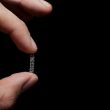Myocardial infarction or myocardial injury? The Fourth Universal Definition of Myocardial Infarction (an update of the 2012 version) is here to clarify that not all cases of elevated cardiac troponin values are acute myocardial infarctions. This document was presented a few days ago at the European Society of Cardiology (ESC) Congress in Munich and simultaneously...
ESC 2018 | CLARIFY: No Survival Benefit with Beta-Blockers Beyond 1 Year After Infarction
This is another study that concludes that beta-blockers have no impact on mortality at 1 year after infarction in stable patients and offer no survival benefit to patients with stable ischemic heart disease who have not experienced a myocardial infarction. This analysis represents 5 years of follow-up in a large, multinational registry and also shows a lack...
What Happens with Small Dissections and Imperfections Only Shown by OCT?
When we carry out an angioplasty guided by angiography alone, as we historically have, we are almost blind. Nowadays, optical coherence tomography (OCT) offers plenty of detail but also raises costs, procedure time, and contrast volume. The question that this study aimed to answer is whether becoming aware of all small defects and imperfections in...
First Results for Ticagrelor in Elective Coronary Angioplasty
This is one of the first studies on the use of ticagrelor in patients with stable coronary arteries who undergo elective angioplasty. Although its number of patients is low and its endpoints are soft, this work at least provides some support to what is already happening in daily clinical practice. Many patients admitted for a...
Great Dispersion in the Prognosis of Patients with Angina and No Coronary Lesions
The prognosis of patients with symptoms of angina (with all their subjectivity) in a setting of no significant coronary lesions is widely varied. It is not as benign as we initially thought and patients do not present as many events as “regular” patients with associated severe coronary lesions. The literature owed us data on the...
EuroPCR 2018 | OxAMI-PICSO: Coronary Sinus Occlusion, Improving Microvascular Function and Reducing Infarct Size
The index of microcirculatory resistance might guide therapy and controlled intermittent coronary sinus occlusions, improve microvascular function, and reduce infarct size. This study included patients with prior ST-segment elevation myocardial infarction treated with primary angioplasty. Researchers measured the index of microcirculatory resistance before stenting and intermittent coronary sinus occlusion was used if the result was...
EuroPCR 2018 | FFR Reduces Death and Infarction Rates Compared with Medical Treatment
Pooled data from the most important recently published studies (FAME 2, Compare-Acute, and DANAMI3-PRIMULTI) conclude that there is a significant difference in favor of fractional flow reserve (FFR) as regards hard endpoints. Coronary revascularization guided by FFR reduces the risk of death and infarction when compared with optimal medical treatment in patients with stable and...
Peri-Procedural Infarction: More Frequent than and Not as Innocent as We Thought
Almost 30% of all patients experience some degree of myocardial injury after elective angioplasty, a statistic associated to an increase in cardiovascular events at 30 days and 1 year, according to this study recently published in Eur Heart J. The study only included consecutive patients who underwent elective angioplasty with a negative troponin level at admission. The...
Peri-Procedural Infarction: More Frequent than and Not as Innocent as We Thought
Almost 30% of all patients experience some degree of myocardial injury after elective angioplasty, a statistic associated to an increase in cardiovascular events at 30 days and 1 year, according to this study recently published in Eur Heart J. The study only included consecutive patients who underwent elective angioplasty with a negative troponin level at admission. The...
Next-Day Discharge after TAVR: Is It Viable?
Next-day discharge after transfemoral transcatheter aortic valve replacement (TAVR) might be viable, with no major complications at 30 days or one year, compared against patients with longer hospital stay. We only have to consider a few factors that will help us choose the most adequate patients for this modality without compromising safety. One of the main advantages...







